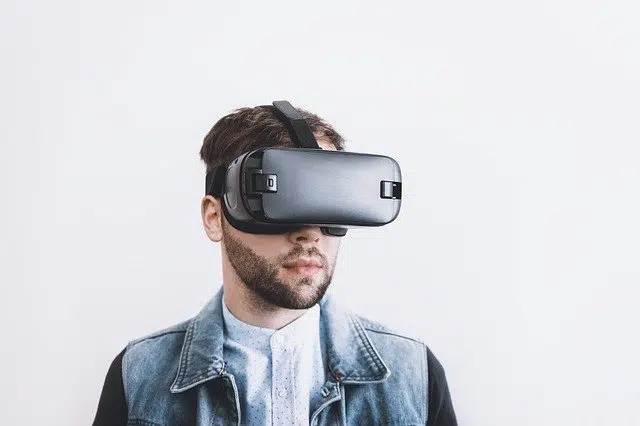
Virtual reality is the technology that allows you to "immerse" yourself in a digital world.
From the Latin virtus ( "strength" or "virtue" ), virtual is an adjective that, in its original sense, refers to that which has the virtue to produce an effect, even though it does not produce it in the present.
The concept, in any case, is currently associated with what has apparent existence, as opposed to what is real or physical . This term is very common in the field of computing and technology to refer to reality constructed through digital systems or formats.
virtual reality
The technological system that allows the user to have the sensation of being immersed in a world different from the real one is known as virtual reality . This illusion is produced thanks to the models created by a computer that the user views through a special helmet. Although virtual reality was born to be applied in video games, it is currently useful in fields such as medicine and transportation.
Virtual reality does not have a well-defined origin, probably because it was the convergence of various ideas and discoveries that took place since the mid-19th century, long before the existence of the computers that we know and use today.

The Internet contributed to the rise of the virtual.
Stages of technological development
Below are certain milestones over the last two centuries, which certainly represent essential points on the path to this fascinating technology:
+ 1838 : Charles Wheatstone, an inventor from Great Britain, created the first stereoscope, a device capable of reproducing static images in three dimensions. It was a system similar in appearance to a pair of glasses, in which two photographs of the same scene were placed, each one taken from a different angle, to simulate human eye vision.
+ 1929 : for the first time in history it was possible to virtually train future pilots of the North American armed forces, thanks to the creation of a flight simulator. It was called Link Trainer (although it was also known by the name Blue Box) and it was absolutely mechanical.
+ 1930s : similar to the previous invention, the first mechanical simulators were created in America for the study of dam and river flooding.
+ 1945 : using the first computer with electronic technology, known as ENIAC, it was possible to simulate the trajectory of projectiles for the first time. This was later applied to the Manhattan project, to simulate explosions.
+ 1958 : the Philco company developed a virtual reality helmet, which translated the movements made by the user.
+ 1965 : A newspaper article titled " The Ultimate Display " written by Ivan Sutherland described virtual reality as a concept, although without using the term itself.
+ 1967 : the company Evans & Sutherland was founded, developer of the first program for creating virtual worlds with three-dimensional models.
+ 1970s : a glove was created that allowed movement through a virtual world.
+ 1979 : the first completely computerized flight simulator was released.
+ 1984 : in the book " Neuromancer ", a novel by William Gibson, the term "cyberspace" was used for the first time, to refer to a virtual world.
Other uses of the term virtual
A virtual pet , on the other hand, is a digital companion created with the aim of accompanying and entertaining people. It has no physical form other than the hardware it runs on, which is usually a small electronic device. The user must feed and care for the virtual pet to prevent it from "dying" .
A virtual library is one that houses digital works in various formats (.doc, .pdf). Through the Internet , these libraries are available to people around the world.
Virtual sex , finally, is a form of erotic relationship that implies the absence of physical contact and that takes advantage of the characteristics of communication and information technologies (ICT) to be carried out.
